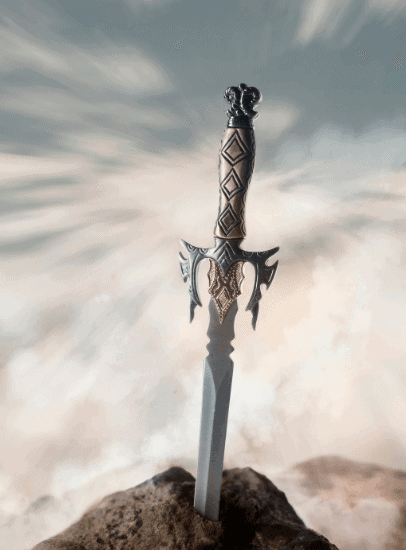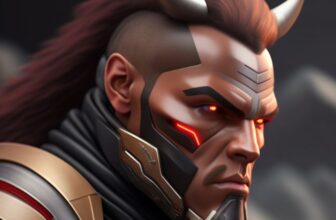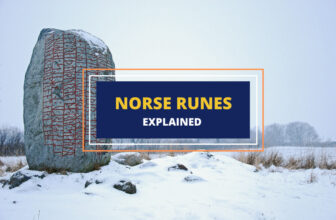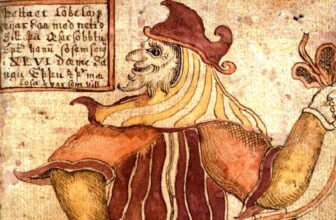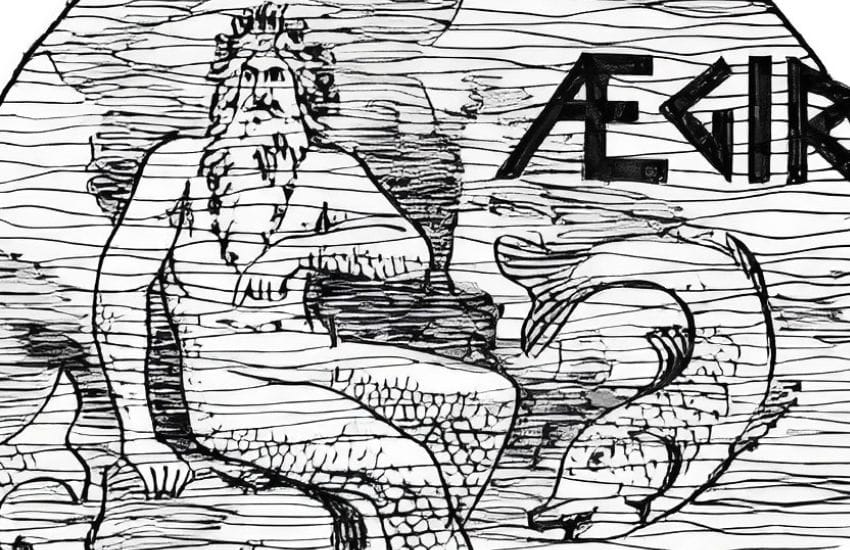
Table of Contents
The Greeks have Poseidon, the Chinese have Mazu, comic-book readers have Aquaman, and the Norse have Ægir. Anglicized as Aegir or Aeger, this mythic figure’s name literally means “Sea” in Old Norse although in some legends he’s also called Hlér.
You’d expect the sea deity of such prominent sea-faring culture like the Norse to play a pivotal role in their myths and legends. Yet Ægir’s role in Norse legends is not very prominent and he plays a subtle role. Here’s a closer look.
Ægir’s Family
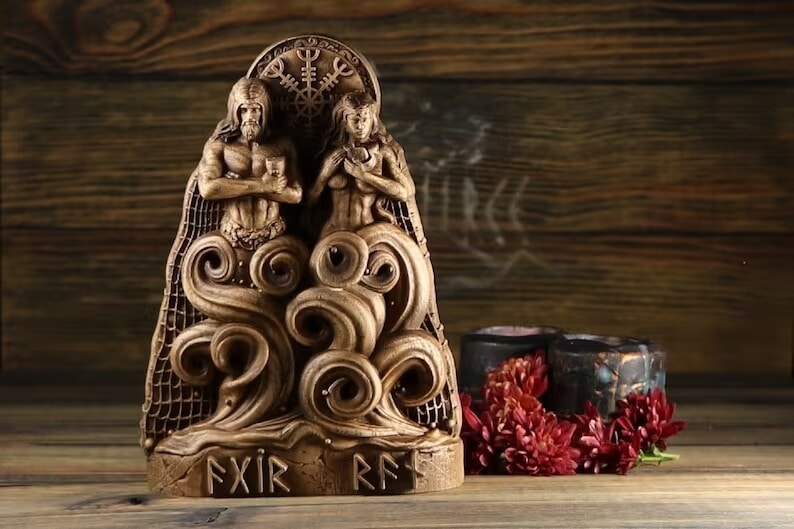
Ægir has two brothers, Kari and Logi, both usually described as jötnar in most sources. Kari was a personification of the air and winds while Logi was a lord of fire. All three of them were viewed as forces of nature, while still portrayed as walking, talking, omnipotent, and largely benevolent beings/deities.
Ægir’s wife was an Asgardian goddess, called Rán. She lived with Ægir on the isle of Hlésey and was also regarded as a goddess of the sea together with her husband. The couple had nine children, all of them girls. The nine daughters of Ægir and Rán personified the waves of the sea and all of them were named after various poetic terms for waves.
The first of these was Dúfa, a name that translates to ‘Wave’. The other two were Hrönn and Uðr (also known as Unn), also representing various forms of ‘Wave’.
The next daughter was named Blóðughadda, a poetic term used to signify waves, which translates to ‘Bloody-Hair’. Another daughter bore the name Bylgja, meaning ‘Billow’, a term synonymous with a large sea wave.
Dröfn (alternatively known as Bára) represented the ‘Foaming Sea’ or the ‘Comber Wave’, while Hefring (also referred to as Hevring) signified ‘Lifting’, indicative of the rising of waves.
Kólga, translating to ‘Cool Wave’, was the name of another daughter. The last of these oceanic daughters was Himinglæva, a name that translates to ‘Transparent-On-Top’, likely referring to the clear crests of waves.
Is Ægir Heimdall’s Grandfather?
The famous Asgardian god Heimdall is described as being the son of nine maidens and sisters, sometimes described as waves. This heavily hints that he is the son of the nine daughters of Ægir and Rán.
However, in the Völuspá hin skamma, an old Norse poem, Heimdall’s nine mothers are given different names. This has caused some confusion about whether this relates to a different set of nine maidens. While that is a possibility, it’s not uncommon for deities and characters in Norse mythology to have several different names. So most historians believe Heimdall’s mothers were indeed Ægir’s daughters.
Who and What is Ægir?
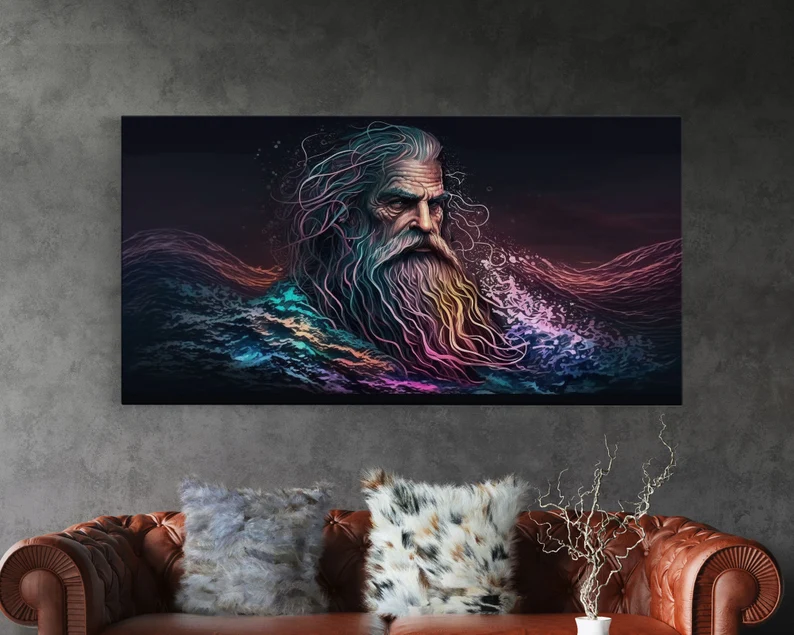
The biggest question around Ægir is not so much who he is but what he is. According to some sources and historians, Ægir is best described as a god. But most Norse legends specifically describe him as something different. Some describe him as a sea giant while others use the more specific term jötunn.
What is a Jötunn?
Most online sources today describe the jötnar (plural of jötunn) as giants for simplicity’s sake, but they were much more than that. According to most sources, the jötnar were the offspring of the ancient proto-being Ymir who literally created them from his own flesh.
When Ymir was slain by the gods Odin, Vili, and Vé, his body became the Nine Realms, his blood became the oceans, his bones turned into the mountains, his hair became the trees, and his eyebrows morphed into Midgard, or “the Earth realm”.
Ever since Ymir’s death and the creation of the Earth, the jötnar have been enemies of the gods, roaming the Nine Realms, hiding, fighting, and causing mischief.
This makes Ægir’s description as a jötunn a bit confusing because he’s actually a benevolent character in Norse mythology. Historians interpret this contradiction in one of two ways:
- Not all jötnar are evil and enemies of the gods, and Ægir is a prime example of that.
- Ægir is simply not a jötunn at all and is either a giant or a god.
Given that Ægir spends a lot of time in the company of the Asgardian (Æsir) gods and is even married to the goddess Rán, it’s understandable why some refer to him as a god.
Most of the historians who view Ægir as a god believe that he belonged to an older dynasty of gods, one that predated the two popular god dynasties in Norse mythology, the Æsir and the Vanir. That may very well be the case but there’s scant evidence as to what exactly that ancient dynasty would be. Unless we just call them jötnar, but then we’re back at the starting line.
What did Ægir Look Like?
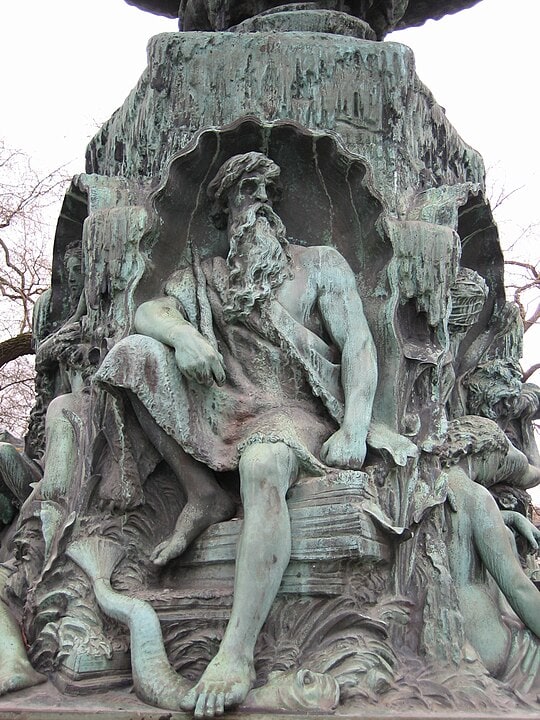
In most of his representations, Ægir was drawn as a mid-aged or older man with a long, bushy beard. Whether he was pictured with his family or hosting a banquet for the Asgardian gods, he was always show with a similar stature to those around him, making it difficult to discern whether he was a giant, jötunn, or god from looks alone. It didn’t matter whether he was a god, giant, jötunn or just a mythical personification of the sea. Ægir was a beloved and worshipped character either way.
Ægir’s Drinking Party
One thing the Norse vikings loved more than sailing was to drink ale. So, probably not coincidentally, Ægir was also famous for frequently hosting drinking parties for the Asgardian gods in his home on the isle of Hlésey. In the image above, he is shown preparing a huge vat of ale for the next feast together with his wife and daughters.
At one of Ægir’s feasts, Loki, the god of mischief, gets into several heated arguments with the other gods and eventually kills one of Ægir’s servants, Fimafeng. In retaliation, Odin jails Loki until Ragnarok. This is the starting point at which Loki turns against his fellow Asgardian and sides with the giants, which leads to a series of fateful events.
On a side note, while murder is a vile crime by any standard, Loki had done much worse than this throughout his career as god of mischief. So it is slightly amusing that this is what finally causes Odin to incarcerate him.
Symbolism of Ægir
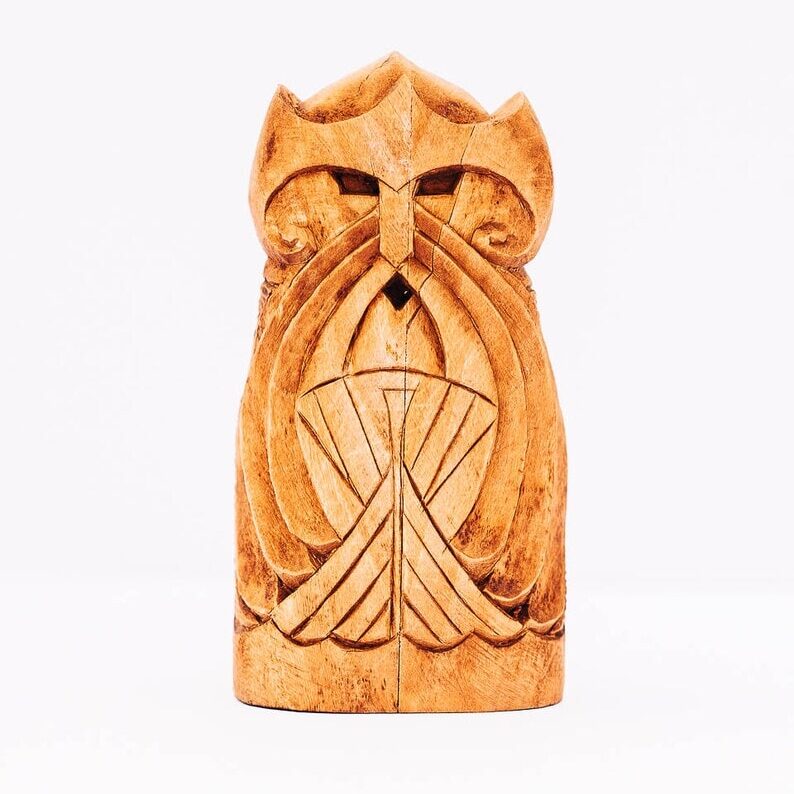
As a personification of the sea, Ægir’s symbolism is clear. However, he’s not nearly as complex or multi-layered a deity as other sea gods from different cultures.
For example, the Greeks feared Poseidon, who had immense power and was often involved in many important stories, altering the destinies of many.
The Norse, however, viewed Ægir just like they viewed the sea: giant, powerful, omnipotent, and to be worshipped, but not much more complex than that.
Importance of Ægir in Modern Culture
Probably because his description is so ambiguous or because he isn’t the most active Norse deity, Ægir is not overly represented in modern culture.
One of Saturn’s moons was named after him as is the mouth of the English river Trent but that’s about it. Maybe he’ll feature in future MCU Thor movies which would shed more light on him as a character of Norse mythology.
Facts About Ægir
Ægir’s wife is Rán.
Ægir’s and Rán had nine daughters associated with the waves.
Ægir’s servants are Fimafeng and Eldir. Fimafeng is important because it’s his death at the hands of Loki that leads to Odin jailing Loki.
Ægir is the divine personification of the sea.
Wrapping Up
Although not as famous as some other Norse gods, Ægir was respected and revered as the divine personification of the sea. Unfortunately, the mentions of Ægir are scant and it is difficult to have a complete understanding of this intriguing god. The little that we know showcases him as a powerful, complex, and unique god.
Related Articles
Baldur – Norse God of the Summer Sun
Skadi – Norse Goddess of Mountains and Hunting
Hel Goddess – The Ruler of the Dead in Norse Mythology
Hoenir – A Major Norse God and a Lot of Contradictions
Vali – A Norse God of Vengeance
11 Legendary Norse Mythology Weapons
